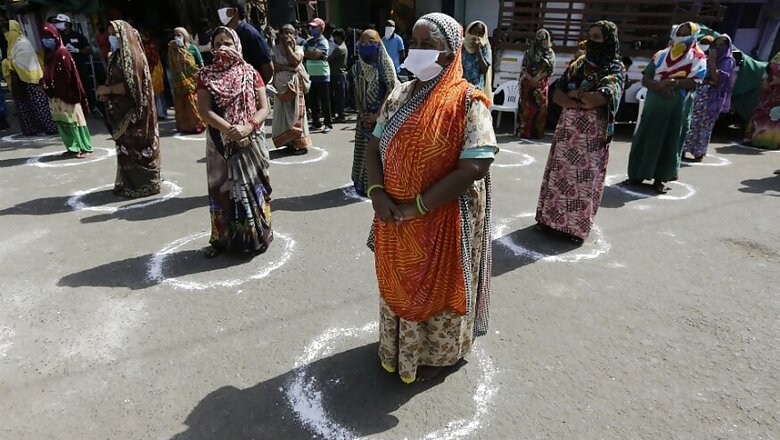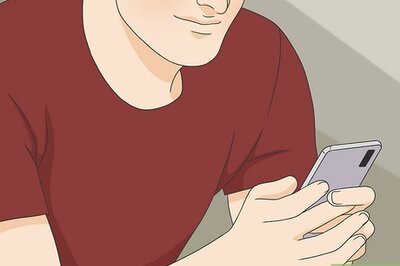
views
New Delhi: Underscoring the import of short-term behavioural changes like wearing of masks to restrict the spread of Covid-19, experts say a week after exposure, a millilitre of saliva of a Covid-19 patient can be laden with as many as a hundred million viral particles. A mere 40-200 strands of the microbe is good enough to infect a healthy person who comes in contact with the microbes.
“One virus particle is not sufficient to cause an infection. It may take 40 to 200 viral particles to enter your nose, mouth or respiratory tract to cause an infection. And that’s why these larger particles, what we call respiratory droplets, which contain more viral particles, are likely to get you infected,” says professor Yuan-Kwok-yung, a leading microbiologist who has worked extensively on the spread of SARS-2003.
Some Asian nations like Taiwan, South Korea, Japan and Singapore have borne the brunt of at least two outbreaks in as many decades. These countries have thus sought to inculcate personal hygiene habits in people -- like wearing of masks – as part of long-term measures to flatten the curve of any future public health crisis.
“If you use a universal basket, you’re stopping those mildly symptomatic or asymptomatic individuals from shedding the virus into the environment and also spraying on other people when they are involuntarily coughing or sneezing. I think that masks should be worn by seemingly healthy people in the present circumstances in all countries where the epidemic is raging,” professor Kwok-yung said in an interview to Hong Kong University where he currently works.
After much debate in European countries and the US on the efficacy of masks in combating Covid-19, there seems to be growing consensus that a protective gear covering mouth and nose can be a highly effective response in checking the spread of the virus from the infected to the vulnerable, especially in the absence of any effective vaccine or drug to the deadly pathogen.
Health workers at high risk of exposure to the contagion are recommended to wear customised N-95 which are said to be highly effective in protecting oral and nasal passages to any exposure to the virus.
Even a surgical mask worn by an asymptomatic or mildly-symptomatic carrier is useful. A surgical mask contains a water repellent layer which stops passage of respiratory droplets containing high viral load.
“It is still better to have a less efficient mask than to have no mask at all,” Prof Kwok-yung adds.
In an interview to Science last month, George Gao, director-general of the Chinese Center for Disease Control and Prevention said that people in the US and European countries were making “a big mistake” by not wearing masks.
“This virus is transmitted by droplets and close contact. Droplets play a very important role — you’ve got to wear a mask, because when you speak, there are always droplets coming out of your mouth. Many people have asymptomatic or presymptomatic infections. If they are wearing face masks, it can prevent droplets that carry the virus from escaping and infecting others,” Dr Gao said on the basis of China’s experiences in containing the contagion.
Some countries where wearing of mask is perceived to be a sign of illness have found it difficult convince people to adopt short term behavioural changes to combat the raging contagion.




















Comments
0 comment